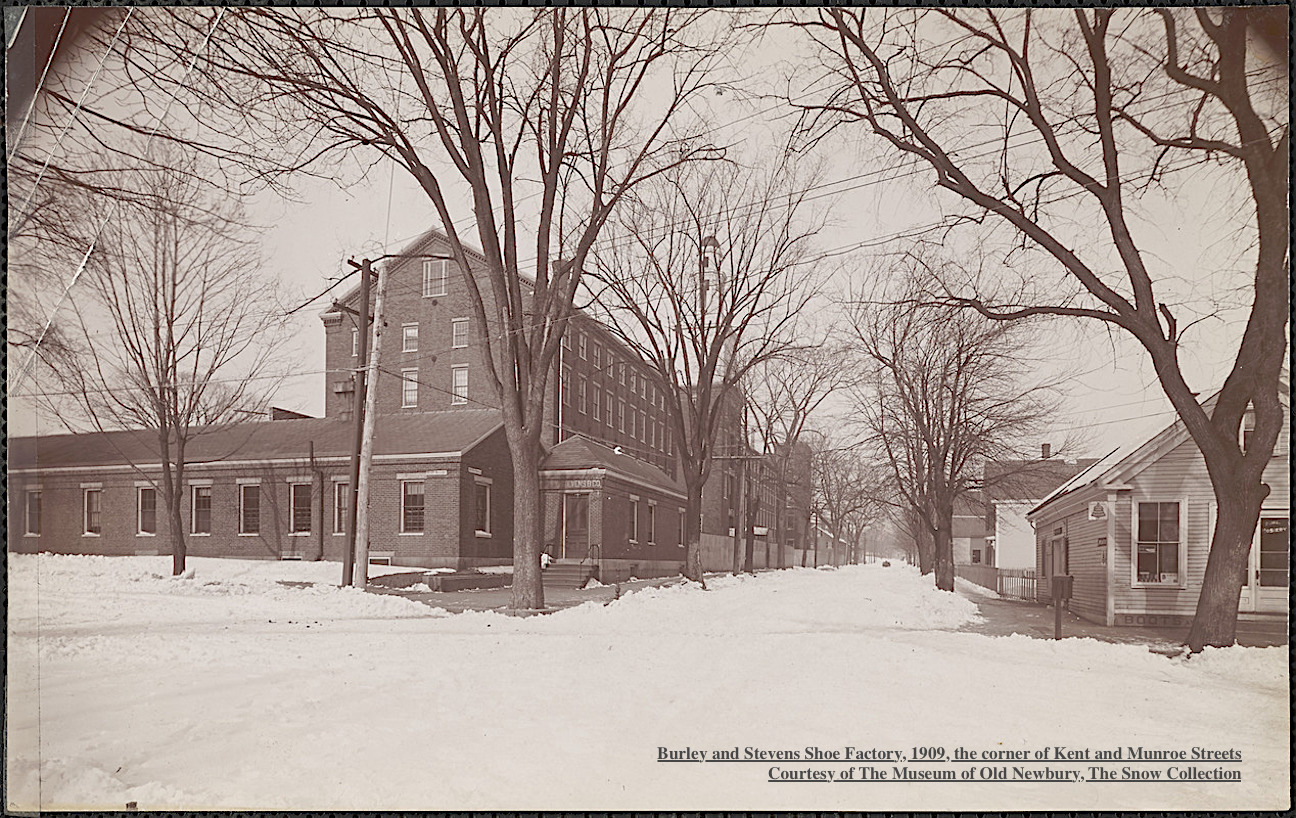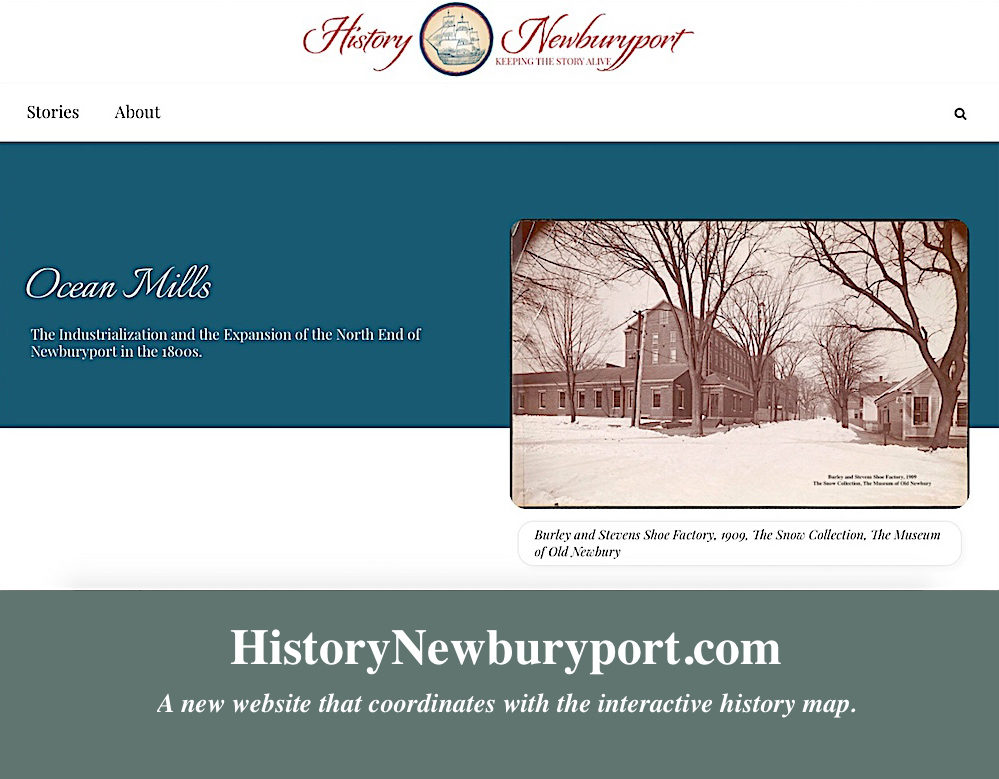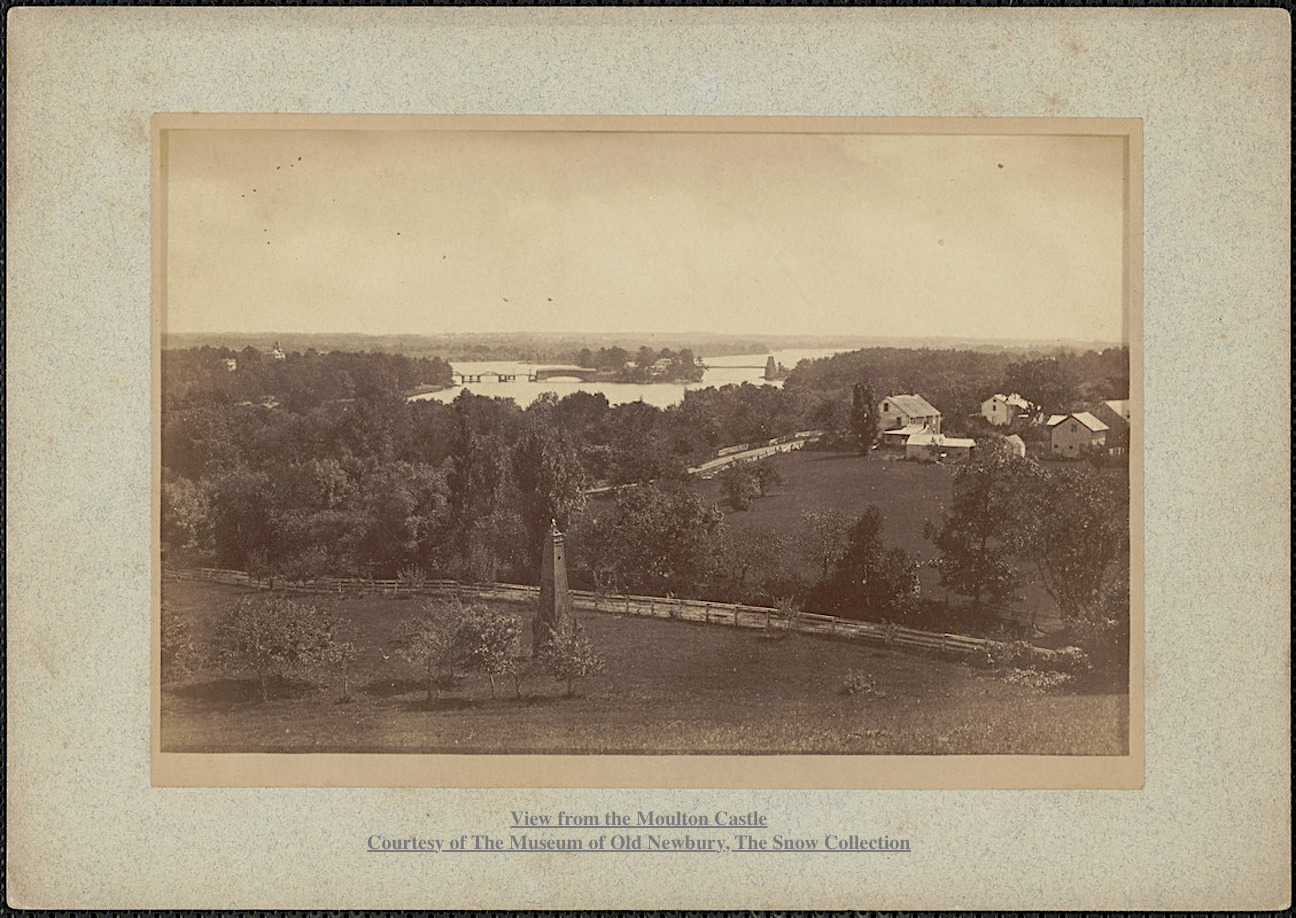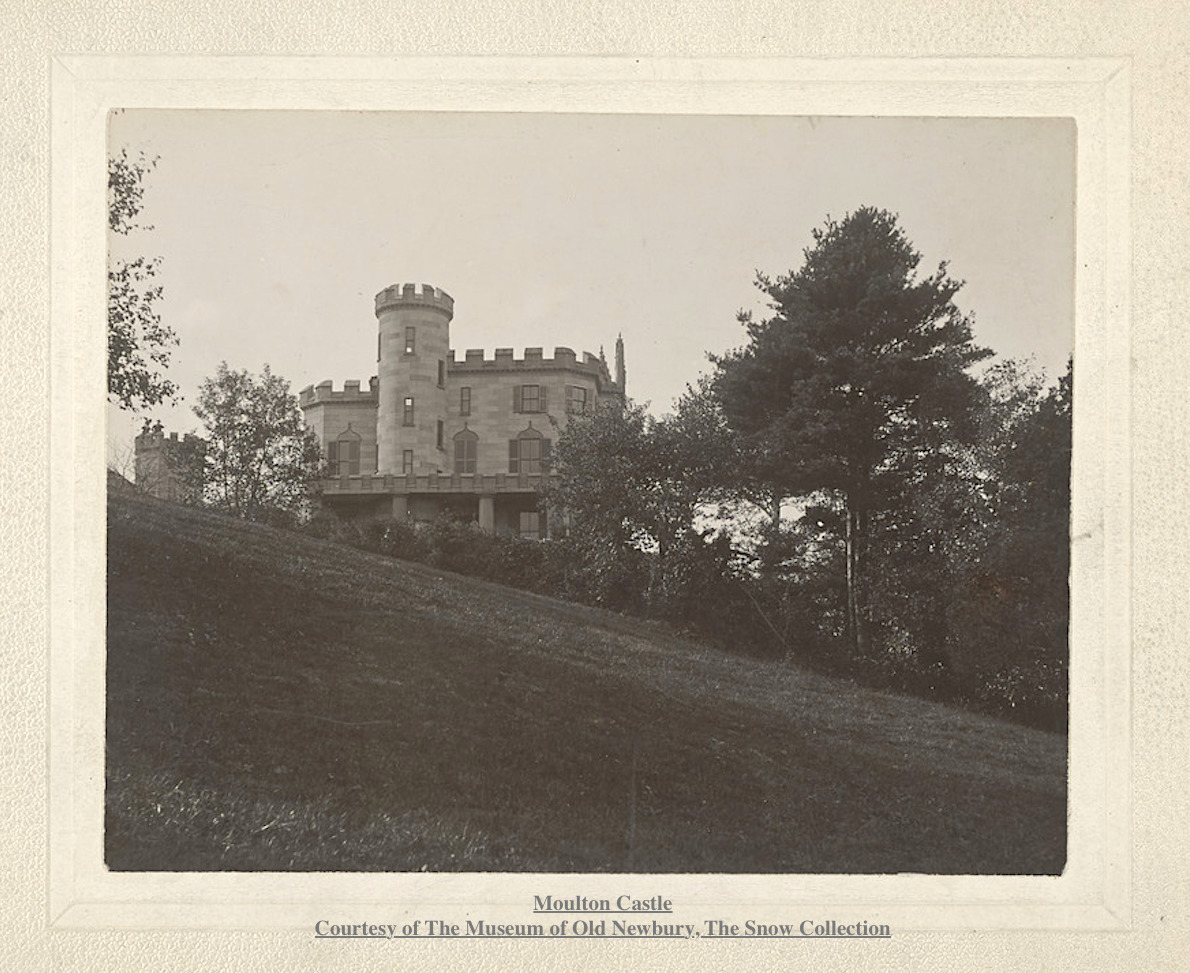 Here is the link to the map: Newburyport – Keeping the Story Alive, Mapping historic stories of Newburyport, MA houses and places, with photos, paintings, videos, old maps, history and anecdotes. Created by The Newburyport Blog, Mary Baker Eaton, editor. (This is one of the many stories that is on the map.)
Here is the link to the map: Newburyport – Keeping the Story Alive, Mapping historic stories of Newburyport, MA houses and places, with photos, paintings, videos, old maps, history and anecdotes. Created by The Newburyport Blog, Mary Baker Eaton, editor. (This is one of the many stories that is on the map.)

Whitefield Mills, Kent and Munroe Streets formerly Ocean Mills
Courtesy of The Museum of Old Newbury, The Snow Collection
Before 1845 the area between Munroe and High Streets was used for pasture and farming.
The Ocean Steam Mills were incorporated by the Massachusetts legislature in March 1845 by Benjamin Saunders, William Balch and Edward S. Lesley. The purpose was to manufacture of cotton cloth.
The company purchased a parcel of land on the corner of Kent and Munroe Streets extending to Carter Street. In 1845 the company started construction of a four story brick mill building between Kent and Warren Street. The mill was built by Albert Currier, a local contractor. The building was completed the next year and the manufacture of cotton sheeting and calico cloth began.
Around1 871 the property was sold and a new company, the Ocean Mills, continued the operation until 1878. At that time the property again changed hands and a third company, the Ocean Mills Company was formed.
In 1886 Seth Milliken of New York purchased the mills and name was changed to the Whitefield Mills. The mill did not succeed and in 1889 the machinery was sold to a Southern manufacturer.
Burley, Stevens & Co. manufactured boots and shoes leased the building as did the Bay State Cordage Company which made tarred cordage and binding twine. The Bay State Cordage Company closed in 1907, however Burley, Stevens & Co. continued. They finally closed and most of the mill was abandoned.
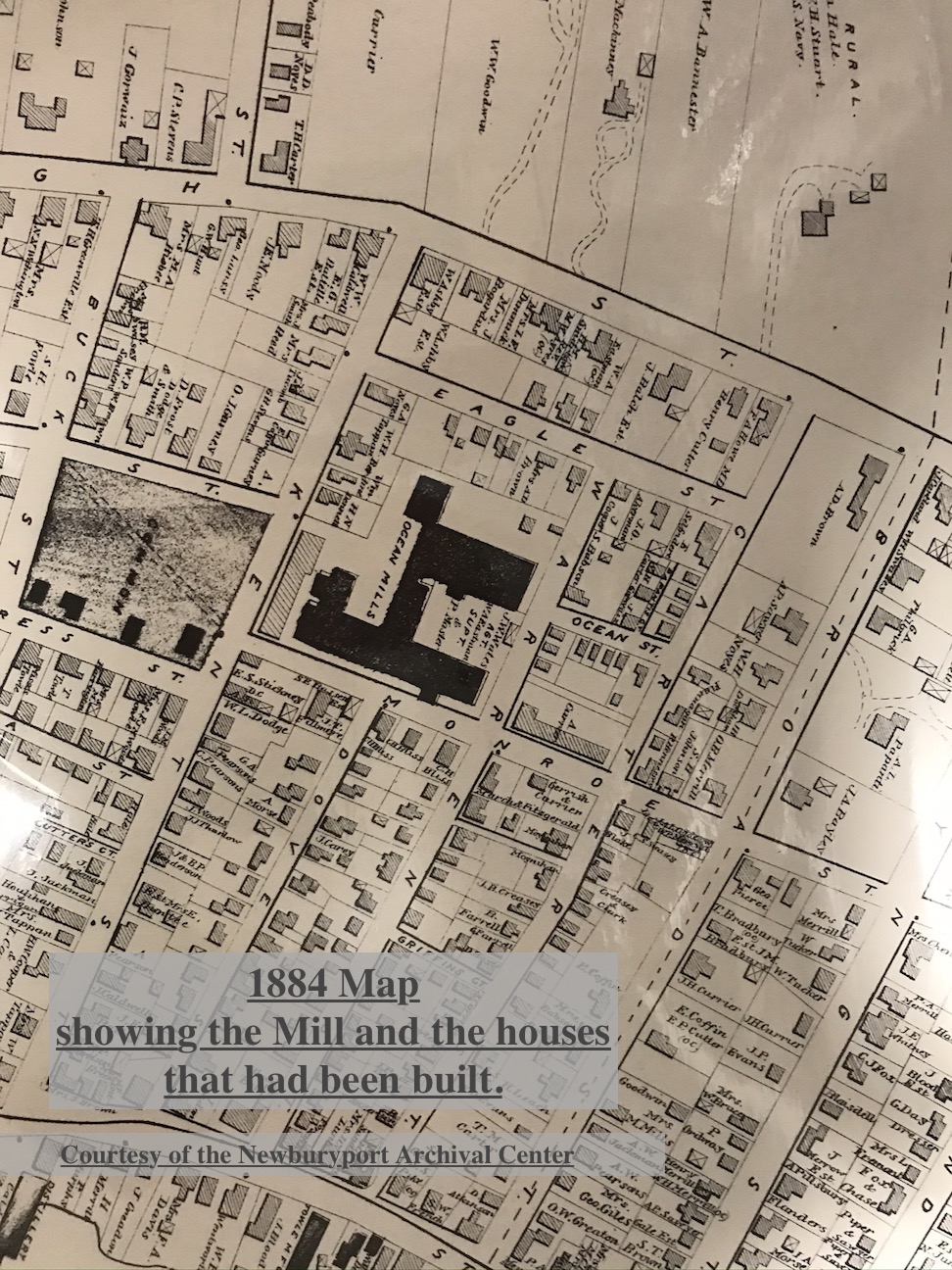
1884 Map, Courtesy of the Newburyport Archival Center, showing the Mill and the houses that had been built around it.
The millworkers needed homes close to their work and so there was a lot of new building on on Carter, Kent, Warren and Munroe Streets and the creation of what is now called the Ocean Mills Historic District, which is an excellent representation of a 19th Century Newburyport industrial neighborhood.
There were single family cottages, usually Greek Revival or Victorian in style, many are on Carter Street. The second type of residence was a larger home that was used as a boarding house. Three building were build on Munroe Street across from the Ocean Mill by James Blood, a real estate speculator. These house were generally Greek Revival in style. And then there were Victorian buildings and cottages with turned brackets decorating the doorways and sometime the eaves of the house. Albert Currier built one of these buildings on Munroe Street.
The overseers and the agents of the mill and skilled craftsmen associated with the industry also built home within this district. These homes were slightly more elaborate, as can be seen on upper Kent Street, they were often vernacular interpretations of one of the many popular Victorian styles such as Second Empire or Victorian Gothic.
In 1941 the Hytron Radio and Electronics Corporation acquired the property for the manufacture of proximity fuse components and radio receiving tubes for the military, and later, television receiving tubes and cathode-ray tubes. In 1959 the factory closed with the loss of 3,000 jobs. In 1996 the building was turned in to luxury condominiums called “The Courtyard.”
History from The City of Newburyport, Historic Property Surveys “The Ocean Mills Historic District” and “53 Warren Street, Ocean Steam Mills,” John J. Currier, the History of Newburyport, and Jerry Mullins, author of the blog, Brick and Tree.
Whitefield Mills, Kent and Munroe Streets formerly Ocean Mills
Courtesy of the Museum of Old Newbury, the Snow Collection
Burley and Stevens Shoe Factory, 1909
Courtesy of the Museum of Old Newbury, the Snow Collection
The Mill 1980, Courtesy of the City of Newburyport, Historic Property Survey
This story is also now on the new website that coordinates with the interactive history map, HistoryNewburyport.com. .
The story on Ocean Mills can be found here at the new website History ~ Newburyport HistoryNewburyport.com.
